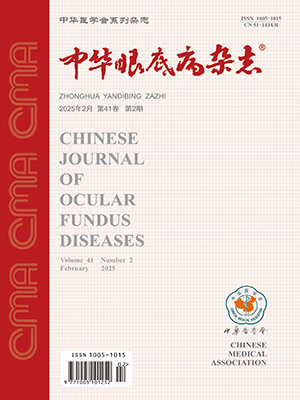In recent years, the complexity of intraocular lymphoma has been gradually recognized by ophthalmologists. Although primary vitreoretinal lymphoma is the dominant type of intraocular lymphoma, ophthalmologists should be aware that it is not unique and avoid overgeneralizing specific clinical features to all intraocular lymphoma types. Intraocular lymphoma can be divided into vitreoretinal, uveal (choroid, iris, ciliary body) lymphoma according to the anatomic affected parts. According to pathological cell types, it can be divided into B cells, mantle cells, T cells and natural killer T cells. At the same time, depending on the presence or absence of extra-ocular tissue involvement, it can also be subdivided into isolated intraocular, oculo-central nervous system, oculo-system, and oculo-central nervous system lymphomas. Vitreoretinal lymphoma tends to occur in the elderly with clinical manifestations similar to uveitis and white spot syndrome and limited response to glucocorticoid therapy. The characteristic fundus manifestations include vitreous gauzy or "auroral" opacity and yellowish-white subretinal mass. Optical coherence tomography plays a key role in diagnosis and can reveal specific changes such as vertical strong reflex and intraretinal strong reflex infiltration. It is worth noting that vitreous and retinal involvement may vary, which has guiding significance for the selection of treatment strategies. In contrast, uveal lymphoma has unique clinical and pathological features, such as the chronic course of choroidal mucosa-associated lymphoid tissue (MALT) lymphoma and the equal distribution of T cells and B cells in iris lymphoma. In diagnosis, choroidal lymphoma often requires histopathological examination, and radiotherapy is the first choice for MALT lymphoma. T-cell lymphoma is similar to B-cell lymphoma in ocular fundus appearance, but diagnosis is more difficult and depends on cytopathology and T-cell receptor gene rearrangement. Comprehensive systematic screening is essential for patients with intraocular lymphoma to identify the primary site. Ocular lesions in patients with systemic lymphoma require differential diagnosis, including tumor invasion, secondary infection, and inflammatory lesions. As the incidence of lymphoma increases, ophthalmologists should constantly update their understanding of intraocular lymphoma to provide accurate diagnosis and treatment.
Citation: Peng Xiaoyan. Comprehensive understanding of intraocular lymphoma. Chinese Journal of Ocular Fundus Diseases, 2024, 40(10): 745-749. doi: 10.3760/cma.j.cn511434-20240812-00306 Copy
Copyright © the editorial department of Chinese Journal of Ocular Fundus Diseases of West China Medical Publisher. All rights reserved




